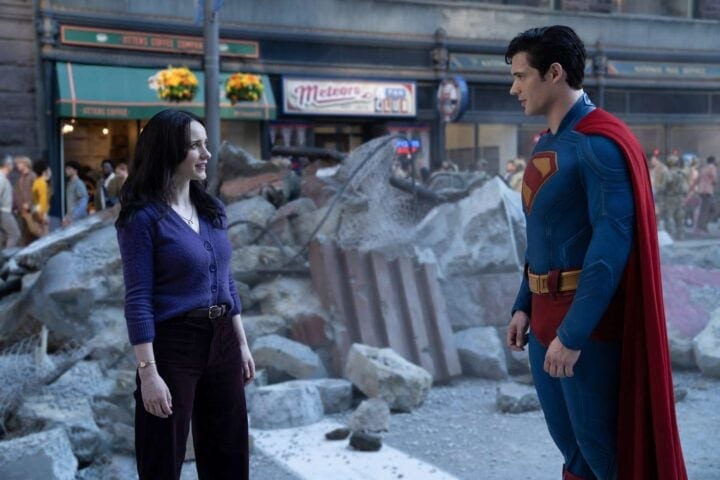Louis Leterrier’s update of Desmond Davis’s Clash of the Titans is catnip for boys who worship Michael Bay, James Cameron, George Lucas, and Roland Emmerich as gods. If affection for the original film endures, at least among Gen-Xers, it’s largely because of Ray Harryhausen’s memorable stop-motion animation, which evoked the mythology of the Greeks by way of Harry O. Hoyt’s The Lost World. And though Harryhausen’s advances may now seem archaic, remember this: so was the fable at the heart of the film. Though it faithfully follows the original’s plotline, Leterrier’s slick entertainment is anything but a throwback—just a concession to the Jerry Bruckheimer school of fast, cheap, and out-of-control visual effects. If it isn’t a total disaster it’s because it’s not without its own well-earned kitschiness.
This film’s Olympus suggests Liberace’s bedroom, with Zeus (Liam Neeson, sans neck) lit far softer than Barbra Streisand was in Yentl. From this glittery dominion, Zeus joins forces with his estranged brother Hades (Ralph Fiennes, playing the god of the underworld as a neckless fusion of Lord Voldemort and Spider) after the people of Argos show their contempt for the heavens by destroying a statue of Zeus (a nod to the Colossus of Rhodes). The friction between the resentful rulers of Argos and their spiteful gods is felt more forcefully this time around, with the people in the streets insisting—with Mel Gibson-esque passion—that sacrificing the king’s daughter, Andromeda (Alexa Davalos), to the Kraken is preferable to demigod Perseus’s mission to destroy the creature while sparing the maiden. But trying to make sense of Zeus’s hypocritical ambitions is like trying to understand Mitt Romney’s stance on health care: One moment he orders Argos’s destruction, the next he’s facilitating Perseus’s journey with a coin, a sword, and a Pegasus.
If the 3D experience wasn’t almost completely beside the point, it would be easier not to call out the film’s arbitrary plot convolutions, specifically how Perseus’s fate spells death for him until it inexplicably no longer does, or how Sam Worthington’s predictably bland performance becomes, like his character Perseus’s journey, an endurance test, or how the accent work wavers all over the map. The eyes are assaulted less here than they were during James Cameron’s far more immersive Avatar, though the format does manage to highlight Leterrier’s voluptuous gift for widescreen framing and shooting landscapes. Still, the rocky terrains and deserts of the film, for all their beautiful scale, don’t evoke ancient Greece so much as they suggest outtakes from Baraka. Pity this wasn’t a nature documentary.
To Leterrier’s credit, he shoots Perseus’s confrontations with the film’s many ghoulies in a manner that, while shy of the incoherence of Bay’s Transformers pictures, is disorienting enough—Pegusus, for example, is almost always seen in near-canted angles—that it becomes hard to harp on the quality of the visual effects. (One wishes the makers of The Wolfman had done the same.) Call it laziness, but like the veils hanging from clotheslines that take down one of Hades’s flying minions, or the Chewbacca-like squawking of one of Perseus’s sidekicks, or the special appearance by Mario and Luigi, it is a spectacularly hilarious laziness all the same.
Since 2001, we've brought you uncompromising, candid takes on the world of film, music, television, video games, theater, and more. Independently owned and operated publications like Slant have been hit hard in recent years, but we’re committed to keeping our content free and accessible—meaning no paywalls or fees.
If you like what we do, please consider subscribing to our Patreon or making a donation.





